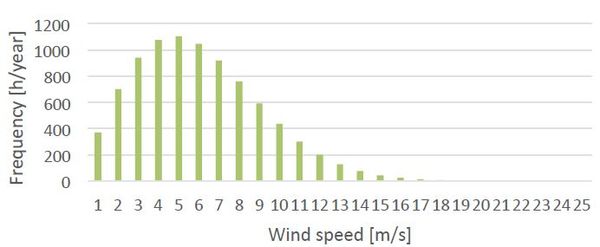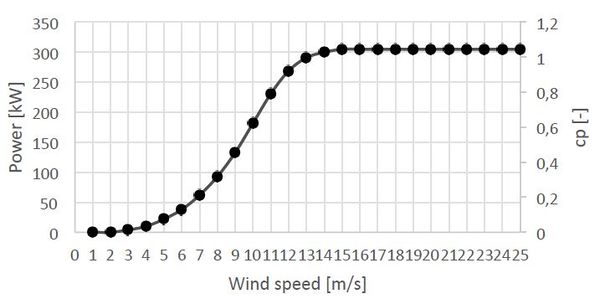Knowledge fuels change
For over a decade, Energypedia has shared free, reliable energy expertise with the world.
We’re now facing a serious funding gap.
Help keep this platform alive — your donation, big or small, truly matters!
Thank you for your support
Wind Energy in Powering Agriculture
Background
Humankind has been using wind energy since ancient times – for sailing, water pumping and grinding. Modern technology, such as a wind turbine is now used also for electricity production in many parts of the world. Its global application has been increasing almost exponentially over the past years.
Wind, the result of global and local temperature difference, represents another source of renewable energy. The governing principle of wind energy is the transformation of wind flow into rotational movements. This is indeed the same principle as for hydropower systems. The power output of a wind energy system is generally estimated by multiplying the available wind speed by the swept area of the rotor. The rotational force can be used either directly (irrigation pumps etc.) or to drive a generator and produce electricity (Find an animation of a wind pump here).
Calculate the Wind Energy
To calculate the energy yield of a wind turbine, multiply the generated power by the duration during which the wind turbine is running. Since wind turbine produces different power outputs at different wind speeds, the mentioned multiplication is a little more complex. We therefore look in detail at the wind conditions in a specific location. Such data can be obtained from wind/weather measurement stations, or from wind atlas if available for the site of interest.
In the following diagrams an estimation of the annual yield of wind power is depicted. The first diagram shows which wind speeds were predominant at the location. This graph is called the frequency distribution. One can see that a wind speed of about 5 m/s occurs more than 1000 hours a year, while stronger wind speeds are less frequent throughout the year.
The second input for calculating the annual energy yield of a wind turbine is the power curve of the wind turbine . The power curve (diagram below) is specific for every turbine model and normally provided by the manufacturer. It says at which power output the turbine generates which wind speed. When multiplying the hours and the corresponding power output for every wind class (1m/s; 2m/s; 3m/s ...) the result shows the energy production per wind class. To get the annual energy production (AEP) of the turbine, sum up the energy yield (Ei) from every wind speed. These calculations can be done with software support (e.g. Excel) or manually.
To calculate the power output of a wind turbine, check out the following equation:
P=0.5*ρ*A*v³*Cp*η (see also the video explanation)
P= power [W]
A= swept area of blades [m2]
v=wind speed at hub height [m/s]
ρ= density of air (1.29[kg/m3])
Cp= power coefficient (Betz’s
coefficient) (59%)
η= system efficiency
System Example: Wind Pump for Irrigation
Wind pumps are one of the first applications for using nature’s power to improve agricultural processes. Already in the 9th century, they were used to irrigate fields or to drain the land. Nowadays the technology is mostly used where a grid connection is too far away and wind conditions are steady enough to provide a reliable pumping solution. The design of a wind pump always depends on the application. Firstly, a distinction between mechanical and electrical wind pumps has to be made. Electrical wind pumps normally have the disadvantage of a lower efficiency, but pumps can be placed away from the location of the wind turbine. To choose the right wind turbine considerations about the desired pumping technology and extraction depth have to be made upfront. Centrifugal pumps generally work better with faster rotating wind turbines while piston and diaphragm pumps work better with slow rotating turbines.
In off-grid areas, where there is sufficient wind (>5 m/s) and ground water supply, wind pumps often offer a cost-effective method for domestic and community water supply, small-scale irrigation and livestock water use. To select a suitable wind pump, the following information is needed: mean wind speed, total pumping head, daily water requirement, well draw down, water quality and storage requirements.
Further Readings
- Energy for Agriculture
- Water and Energy for Food (WE4F) portal on energypedia
- FAO Study: Opportunities for Agri-Food Chains to become Energy-Smart
- Reader of the MOOC "Powering Agriculture - Sustainable Energy for Food"
- Energy Services for Modern Agriculture
- Guide for planning wind projects
- Overview of Small-Scale Wind Turbines
- Financing Aspects - Wind Energy
- Toolbox on Solar Powered Irrigation Systems on energypedia





















